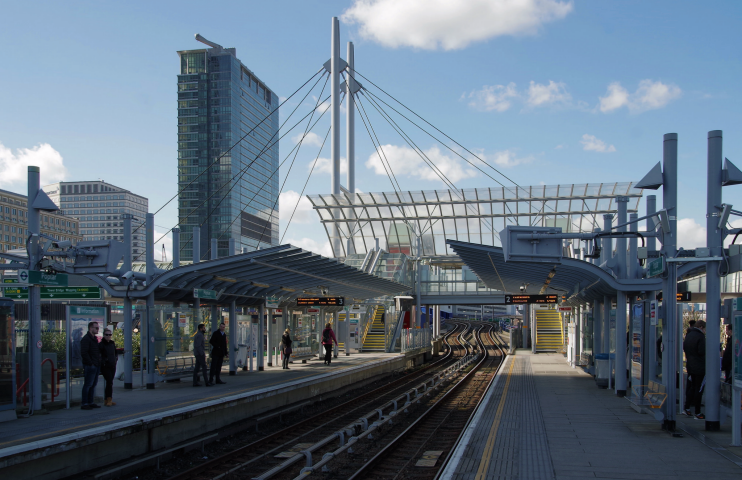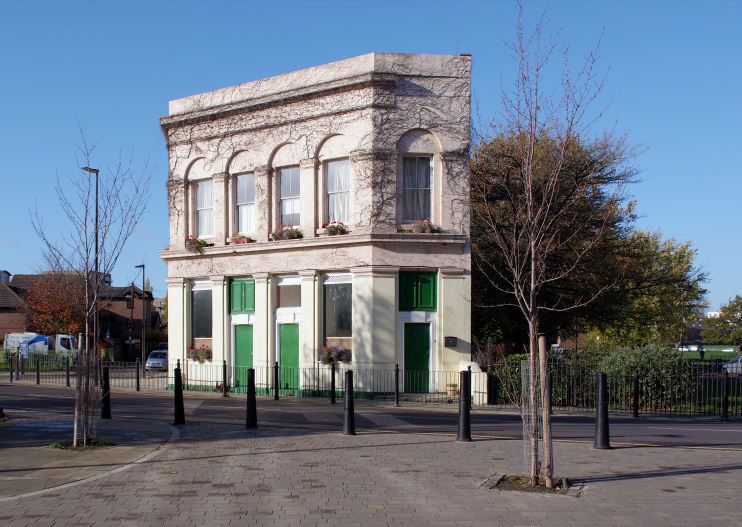Poplar
Poplar, Tower Hamlets
A stone’s throw from the top of Canary Wharf’s towers, Poplar is a historically poor East End district where regeneration projects continue to try to improve the quality of life

Poplar takes its name from the native trees (Populus canescens and Populus nigra) that once thrived on the moist alluvial soil beside the marshes. From the 17th century Poplar provided homes for workers at the docks that lined the riverfront from Limehouse around the Isle of Dogs to Blackwall. It became one of London’s first multi-ethnic districts, with inhabitants of Indian, Chinese and ‘Nubian’ origin.
The opening of the West India Docks in 1802 stimulated a rapid growth in housing development, mainly mean terraces of rented cottages. In 1817 Poplar became a parish, with All Saints consecrated as its parish church six years later.
Poplar Fields, the area north of East India Dock Road, was built up as Poplar New Town from the 1830s to the mid-1850s. By the late 19th century, poverty and overcrowding were rife.
The borough of Poplar, created in 1900, soon gained a reputation for political radicalism, especially for the Labour council’s demand that London’s wealth should be distributed more evenly among its constituent parts. The borough’s determination to adequately relieve the suffering of its poor was nicknamed ‘Poplarism’ by the Glasgow Herald in 1922 and the term became generic for allegedly spendthrift Labour councils.
The district now consists mostly of council-built flats and houses dating from the 1950s to the 1970s, notably on the Lansbury estate. Only a few structures – mainly churches, pubs and public buildings – pre-date the Second World War. The photo below shows the former Sabbarton Arms (built c.1869), Upper North Street, which closed in 1999 and was converted to residential use.

Forty years ago public housing accounted for 97.6 per cent of Poplar’s dwellings. The new world that soon afterwards sprouted on the Isle of Dogs brought some private residential schemes here but there was at first little scope or appetite to build the kind of apartment complexes that have transformed nearby localities like Blackwall. After all, poor people have to live somewhere in Docklands.
However, private developments have begun to appear more frequently in recent years – especially at former industrial sites – such as New Festival Quarter on the bank of the Limehouse Cut, which was completed by Bellway in 2014 and contains 502 homes. Completed in 2020, Barchester Court (83 Barchester Street) consists of 115 ‘affordable’ apartments that were built as part of an obligation imposed on the developers of Newfoundland Quay, aka ‘the diamond tower’, in Canary Wharf.
Poplar High Street has a New City College campus – but not much else in the way of amenities. Built in 1870 at the corner of the High Street and Woodstock Terrace, the old Poplar town hall is now the Lansbury Heritage Hotel.
Poplar’s real high street is Chrisp Street, which has been a focus of recent regeneration efforts, along with the zone now called Poplar Riverside – the river in question being the Lea. A DLR station opened at Langdon Park in 2007 and the disused Old Poplar Library was been restored as a ‘seedbed’ for start-up businesses. The library building will soon be integrated within a new residential/commercial development by Poplar HARCA. Other projects aim to overcome the barrier-like presence of the A12 Blackwall Tunnel Northern Approach.
Joseph Stalin, leader of the Soviet Union from 1924 to 1953, lived in Poplar in the early 1900s as a political refugee.
The long-running BBC TV series Call the Midwife (originally based on a memoir of the same name) is set in Poplar.
